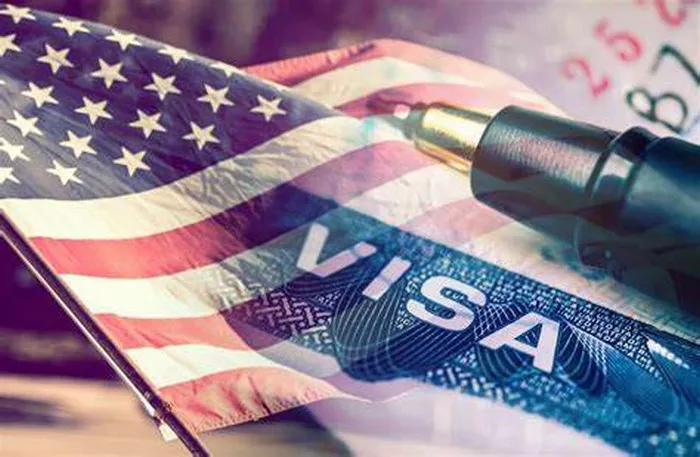In today’s interconnected world, individuals seeking employment opportunities often find themselves contemplating working in the United States. The U.S. job market boasts a diverse range of industries and opportunities, making it an attractive destination for professionals worldwide. However, navigating the complex web of U.S. immigration laws and visa requirements can be daunting. Understanding the different types of work visas available and the eligibility criteria associated with each is crucial for anyone considering employment in the United States.
Introduction to U.S. Work Visas
The U.S. offers various types of work visas, each designed to accommodate different categories of foreign workers. These visas enable individuals to live and work legally in the United States for a specified period, typically tied to their employment status or specific circumstances. The type of visa required depends on factors such as the individual’s occupation, employer, and intended duration of stay.
Understanding the Visa Categories
1. Nonimmigrant Work Visas: Nonimmigrant work visas are temporary visas granted to individuals seeking to work in the U.S. for a limited period. Common types of nonimmigrant work visas include the H-1B visa for specialty occupations, the L-1 visa for intracompany transferees, and the O-1 visa for individuals with extraordinary abilities in their field.
2. Immigrant Work Visas: Immigrant work visas, also known as green cards, grant permanent residency status to foreign nationals seeking to live and work permanently in the United States. These visas are typically sponsored by an employer or obtained through family relationships, diversity lottery programs, or other special categories.
Key Considerations for Work Visa Applicants
1. Employer Sponsorship: Many work visas require sponsorship from a U.S. employer. This means that the employer must petition the U.S. Citizenship and Immigration Services (USCIS) on behalf of the foreign worker, demonstrating the need for their skills and expertise.
2. Occupational Eligibility: Different visa categories have specific eligibility criteria based on the nature of the applicant’s occupation. For example, the H-1B visa is reserved for individuals working in specialty occupations that require specialized knowledge and a bachelor’s degree or higher.
3. Labor Certification: Some immigrant work visas, such as the employment-based green card categories, may require labor certification from the U.S. Department of Labor. This process involves demonstrating that there are no qualified U.S. workers available to fill the position being offered to the foreign worker.
4. Quota Limitations: Certain nonimmigrant work visas, such as the H-1B visa, have annual numerical limitations or quotas imposed by the U.S. government. As a result, obtaining these visas can be highly competitive, with applicants vying for a limited number of available slots each fiscal year.
Common Types of U.S. Work Visas
1. H-1B Visa: The H-1B visa is one of the most sought-after work visas for professionals in specialty occupations. It allows employers to hire foreign workers for roles requiring specialized knowledge and a minimum of a bachelor’s degree or equivalent.
2. L-1 Visa: The L-1 visa is designed for intracompany transferees, allowing multinational companies to transfer employees from their foreign offices to the United States. It comes in two subcategories: L-1A for executives and managers, and L-1B for employees with specialized knowledge.
3. O-1 Visa: The O-1 visa is reserved for individuals with extraordinary abilities or achievements in their field, including artists, scientists, athletes, and business professionals. It requires applicants to demonstrate national or international acclaim in their area of expertise.
4. EB-3 Visa: The EB-3 visa is an immigrant visa category for skilled workers, professionals, and other workers. It is divided into three subcategories: EB-3A for professionals with bachelor’s degrees, EB-3B for skilled workers with at least two years of training or experience, and EB-3C for unskilled workers in positions that require less than two years of training or experience.
Navigating the Application Process
Applying for a U.S. work visa involves a multi-step process that varies depending on the type of visa sought. While the specifics may differ, the general steps typically include:
1. Obtaining a Job Offer: Securing a job offer from a U.S. employer willing to sponsor the applicant for a work visa is often the first step in the process.
2. Submitting a Petition: The employer typically files a petition with the USCIS on behalf of the foreign worker, providing documentation to support the need for hiring a foreign national.
3. Attending Interviews and Providing Biometrics: Depending on the visa category, applicants may be required to attend interviews at a U.S. consulate or embassy and provide biometric data such as fingerprints and photographs.
4. Awaiting Visa Approval: Once the petition is approved and all necessary interviews and screenings are completed, the applicant awaits a decision on their visa application.
5. Entering the U.S. and Obtaining Work Authorization: Upon approval, the applicant can enter the United States and begin working for the sponsoring employer. They may also need to apply for additional work authorization documents, such as an Employment Authorization Document (EAD) or a Social Security Number (SSN).
Conclusion
Obtaining a work visa to the United States can be a complex and time-consuming process, but for many, it represents the opportunity to pursue their career goals and aspirations in one of the world’s leading economies. By understanding the various visa categories, eligibility requirements, and application procedures, individuals can navigate the U.S. immigration system with greater confidence and maximize their chances of success in securing employment in the United States.


